The Bank of England has taken the decision to increase interest rates by a further 0.25%, placing the base rate at 5.25%.
This marks the 14th consecutive increase in a row since rates first started to increase in December 2021.
The last time the base rate hit 5.25% was in February 2008, over 15 years ago.
However, this increase of 0.25% is smaller than the last 0.5% increase implemented by the Bank.
CEO of Octane Capital, Jonathan Samuels, comments:
“Whilst an unpopular opinion, it could be argued that the Bank of England hasn’t been daring enough in their decision to increase rates again today and really another 0.5% increase was needed in order to tame inflation.
It’s far better to have a short period of pain brought about by higher interest rates, rather than a sustained period of significant economic turmoil and uncertainty.
Take America, for example, where rates started to rise at a similar time to the UK, but in a far more aggressive manner.
Inflation there is already back to 3% and so the target of 2% is within reach.
If we had been as bold, then we too would be close to achieving the much heralded ‘soft landing’ and would be far closer to interest rates falling than we are now.”
Director of Benham and Reeves, Marc von Grundherr, comments:
“A fourteenth consecutive base rate hike will come as yet another nail in the coffin for the nation’s borrowers and will do little to boost a property market that has been treading water in recent months.
We have seen some positive signs in recent weeks with mortgage approvals climbing.
However, while this boost in market activity is good news, higher interest rates are likely to stifle the purchasing power of the nation’s buyers even more, resulting in the further stagnation of house prices.”
Managing Director of Barrows and Forrester, James Forrester, comments:
“The nation’s borrowers will be forgiven for feeling like they are trapped in some sort of Bank of England Groundhog Day, with rates increasing for the fourteenth consecutive time today.
The base rate is now the highest seen in over fifteen years and so the latest generation of buyers will no doubt be panicked by the steep cost of borrowing they face in the current market.
The silver lining is that a lower rate of increase suggests that we could be nearing the peak and while we expect to see lucky number fifteen materialise, they could well plateau before the year is out.”
Managing Director of House Buyer Bureau, Chris Hodgkinson, comments:
“Despite interest rates increasing consistently over such a sustained period of time, the property market is yet to topple.
However, while it has remained largely impervious where property values are concerned, there is a growing undercurrent of instability forming beneath the surface.
This is taking the form of less buyer activity, longer transaction times and, ultimately, a higher chance of transactions collapsing before they reach the finish line.
So while sales are still completing and for a fair price, sellers can expect a far more turbulent time making it through to completion.”
CEO of RIFT Tax Refunds, Bradley Post, comments:
“The Bank of England’s ‘aggressive’ approach to managing inflation via interest rates has, to date, been pretty abysmal.
It’s fair to say that they haven’t acted swiftly enough, or with the required level of intent to actually curb inflation, which remains extremely high.
At the same time, fifteen consecutive base rate hikes have had a serious impact on the average household, who are now not only dealing with a sustained increase in the cost of living, but are also paying the price when borrowing to make ends meet.”
Anna Clare Harper, CEO of sustainable investment adviser GreenResi, comments:
“This rise in interest rates means that two million households with mortgages on variable rates, or with their fixed rates coming to an end this year, face even higher monthly mortgage payments.
The impact cannot be understated: the cost of housing will be closer to, or even above, net incomes for many householders.
We can expect to see many of these property owners selling up for lower prices.
Investors we work with are currently buying at 20 to 30 per cent below peak 2022 house prices, though it is worth noting that peak values reflected a mini-bubble from reduced stamp duty combined with very low interest rates through Covid.
Despite price reductions, housing is no more affordable today, since higher interest rates also affect potential property purchasers.
This means demand for rental properties is likely to continue to grow, making rents ever higher.”
Alex Lyle, director of Richmond estate agency Antony Roberts, comments:
“Yet another interest rate rise, coming on the back of so many and with the potential for more to come, creates further uncertainty for the housing market.
Although some areas have proven remarkably resilient to rising interest rates, inevitably this is less the case the higher they go.
This latest rate rise will give those buyers who were perhaps wavering another excuse to back out.
Many buyers and sellers are already sitting tight until the autumn in the hope that the situation will be clearer by then, particularly if inflation continues to fall.”
Mark Harris, chief executive of mortgage broker SPF Private Clients, comments:
“After 14 rate rises in as many meetings, it’s time for the Bank to press the pause button.
Give this latest rate rise time to take effect and see how the markets react before deciding whether to continue with these rate increases.
Consecutive rate rises have been painful; it’s time to let them do their job, rather than causing continued anxiety and distress for borrowers.
Those with a base-rate tracker will see their mortgage rate increase by 25 basis points.
A borrower with a £250,000 repayment mortgage on a 25-year term and a current pay rate of 4.5 per cent will see their monthly payments rise from £1,390 to £1,425.
The cumulation of 14 successive rate rises is significant.
A borrower with a £250,000 mortgage on a tracker pegged at 1 per cent over base rate will have seen their monthly payments rise from £943 in December 2021, when base rate rose from 0.1 per cent to 0.25 per cent, to £1,649 today.
Lenders have already priced this increase into their fixed rates so we don’t expect pricing to rise.
Indeed, a number of lenders have reduced fixed rates in the past few days on the back of calmer Swaps, which underpin the pricing of fixed-rate mortgages.
The extreme volatility we have seen in Swaps over the past few weeks has settled following June’s better-than-expected inflation data.
However, while other lenders may reduce their fixed rates, long gone are the days of rock-bottom pricing.
Borrowers due to come off cheap fixes face a real payment shock, so it is important to plan ahead as much as possible and act now.
Rates can be booked up to six months before you need them so speak to a whole-of-market broker as to what’s available.
If when you come to remortgage rates are cheaper, borrowers can choose another deal.
If you are not due to remortgage for a year or two, pay down other, more expensive, debt, cut unnecessary spending and consider overpaying on your mortgage if possible to lessen the pain when the time comes.”
Simon Gammon, Managing Partner at Knight Frank Finance, comments:
“Today’s rise in the Bank Rate has been priced in for some time and we expect lenders to continue making small cuts to mortgage rates during the coming weeks.
Inflation data published later this month will be far more important for the path of mortgage rates and, barring any surprises, it’s likely that the peak in fixed rate mortgages has passed.
Tracker rates are still quite a bit cheaper than fixed rates, despite today’s rise, which is driving elevated levels of remortgaging activity.
Many borrowers are now opting for tracker products with a view to fixing once mortgage rates fall further.”
Tom Bill, head of UK residential research at Knight Frank, comments:
“Today’s rise was priced in and fixed-rate mortgage deals will be unaffected.
Tracker rates will rise but the growing popularity of these deals shows there is a belief that the bank rate is near its peak.
It has been a bumpy ride back to normality for interest rates, with the previous government doing too much too quickly and the Bank of England arguably doing too little too late, but the last 14 years of ultra-low rates will increasingly be seen as the exception rather than the rule.
Some lenders are cutting rates and as inflation continues to fall, sentiment in the housing market will improve.
That said, downwards pressure on prices and transaction volumes will continue into next year as more people roll off fixed-rate deals and while the market is not on its knees, demand will remain subdued through to the next election.”
Gareth Lewis, managing director of property lender MT Finance, comments:
“With yet another rate rise from the Bank of England, one wonders whether the true impact of successive rate rises is actually having the desired effect.
With so many homeowners on fixed-rate mortgages, there is a time lag before they come off their existing rates and the increase in interest rates has an impact.
By raising Bank Rate, the Bank is being seen to be doing something to tackle inflation but is it actually working?
There may be a case for leaving alone for a while and waiting to see what impact these successive interest rate rises is actually having, particularly as we come out of the summer holidays when the picture is distorted.”
Jeremy Leaf, north London estate agent and a former RICS residential chairman, comments:
“A small rise in rates had been widely expected but the pace and size of these increases is almost as important.
Lenders have already allowed for another uplift in rates to their mortgage pricing and there are hopes that mortgage rates should start edging downwards.
While a quarter-point rise won’t be welcomed by borrowers on variable rates, it is a positive in a way as rates could have risen by more than that, as they did at the last meeting.
Confidence and expectation that rates are at, or near, their peak make such a difference to homebuying decisions.
We have already seen quite a bit of talk about rates coming down, so it is clear to us that many are sitting on their hands before making any big buying decisions.”
Commenting on interest rates rising, defeating inflation and avoiding a BofE review by the Economists’ Establishment, Charles White Thomson, CEO at Saxo UK, said:
“Today’s hike of 25bps by the Bank of England takes the cumulative rate hikes to 515 basis points from the turbo charged days of base rates at 10 basis points.
The ‘no ifs, no buts’ war on enemy number one, inflation, is a battle royal and continues to apply significant pressure to the struggling UK economy and consumer.
We should not underestimate the speed and ferocity of such rate moves and the pressure this is applying to the leveraged consumer.
The full extent of this has yet to be seen, as with inflation there is lag, including mortgage holders who are rolling off unprecedented super cheap deals.
Monetary policy setters, especially in the UK, have a highly difficult conundrum to solve – defeat inflation with the blunt weapon that are interest rates without breaking the economy and consumer.
The risk for further policy failure is real and the stakes are getting increasingly high.
The question of how we got here is a critical one. I want institutions like the Monetary Policy Committee to break the cycle of group think.
It is not just the Bank of England; it is many of the world’s Central Banks and other institutions who suffer from this.
It has been a disappointing period for many of these institutions with key logic based on super cheap money in the form of quantitative easing and rock bottom interest rates and the resulting asset bubbles and inflation driving the existing counter measures.
The view on transitory inflation is a classic example – the collective Central Banks filled to the brim with highly qualified Economists, many of whom are all trained in the same institutions in the same financial theory and who, in the majority, believed that inflation would return quickly to 2% because that is what the theory predicted.
This is why I would like a full review of our Monetary Policy, and the performance of the Governor and the MPC to be carried out by ‘generalists’ as well as Economists.
Going forward, the MPC and similar organisations should have a mix of Economists as well as informed generalists who should rejoice in their ability to think differently because it generates new thinking.
Swimming against the tide is not easy and that is why in the majority of cases, it is more common to have the consensus supporters than not.
The recent announcement that the distinguished and former Chair of the Federal Reserve, Ben Bernanke, has agreed to lead a review into the Bank’s forecasting and related processes supported by the Bank’s Independent Evaluation Office leaves me with mixed emotions.
The review is welcomed but the area of concern is that this is being carried out by the Economists’ Establishment.
Though I acknowledge that Economists need to be heavily involved in any review, my ask is to see fresh eyes and the involvement of more experienced and informed generalists so that we bring a less purist view to this important process.”
Steve Clayton, head of equity funds, Hargreaves Lansdown, comments:
“This was a tough call for the Bank’s policy committee.
In the end, six members voted for the quarter-point hike, two for a half-point, with only one voting not to raise at all.
Inflation data has been improving, but the economy remains stronger than many expected. In the end, the Bank opted to play it safe.
A quarter-point rise keeps the pressure on – but does not add too much to the heat.
In their commentary, the MPC highlighted that market expectations for future levels of rates had risen sharply, to average almost 5.5% over the next three years, with a peak level of just over 6%.
The committee pointed out the increasing conflicts in the data.
They stressed that pay growth in particular, at 7.7%, is far ahead of their earlier expectations and risks embedding elevated inflationary expectations into the economy.
Inflation is seen falling to around 5% by year-end and does not reach the 2% target level until 2025 Q2, with risks on inflation skewed to the upside.
The Bank sees its monetary stance as restrictive at these levels but, even so, the MPC stress they are prepared to go further should evidence of more persistent inflationary pressures emerge.
So far, the markets have been relatively approving of today’s move and the MPC’s statement.
Gilt yields have fallen a shade, including the 2 and 5 year levels that are important for where fixed rate mortgages may be headed.
Sterling took a lurch down, even though it was already at its month’s low against the dollar before recovering a fraction to $1.265.
The stock market has, so far, taken the hike positively with the FTSE trimming earlier losses, to stand at 7515 shortly after the announcement.”
James Richard Sproule, Chief Economist UK at Handelsbanken, comments:
Three way split in MPC voting indicates ongoing debate
“The Bank of England’s (BoE’s) Monetary Policy Committee (MPC) has today raised interest rates by 25bp to 5.25%, in line with consensus.
The MPC voted in a three way split, with one member voting for no rise (the dovish Dhingra), two members voted for 50bp (Mann and Haskell), and the majority voted for 25bp, including the newest MPC member Megan Greene (who has replaced the dovish Sylvia Tenreyro).
We now expect a further interest rate rise of 25bp in September to 5.5%, which we are forecasting will be the peak of this interest rate cycle (market consensus is that the peak will be 5.75%).
We are forecasting gradual easing in 25bp steps from mid-summer 2024.”
Nominal rates expected to remain above 3% through 2026
“Through early to mid-July market consensus had been for UK interest rates to peak above 6% in this cycle, with some stressed scenarios seeing rates potentially rising to 7%.
Economist forecasts have been generally more restrained and due to the most recent inflation figures (CPI inflation fell by more than expected from 8.7% to 7.9% in June, still well above its 2% target), market fears of more substantial hikes have eased.
The BoE expects inflation to fall to 5% by year end, driven by lower energy and moderating food and goods costs, but services prices inflation is presently over 7% and is expected to remain elevated throughout the remainder of this year.
We concur with the Bank’s view and we expect inflation will continue to fall over the coming 12 months, but we anticipate inflation will prove stickier than anticipated once it falls to around 3%, the result of this is that we expect nominal interest rates to remain above 3% through to 2026.”
Higher rates are having ongoing impact on house prices
“The impact of today’s rate rise must also be reassessed.
With 62% of UK mortgages fixed for five years or more, the monetary policy transmission mechanism to the wider economy, traditionally around a year, is taking ever more time to be felt (the Bank is in the process of reviewing this).
Even for businesses, where variable interest rate loans are far more common, reassessing business plans and measuring the responses from suppliers, customers and competitors takes time.
The result is while people are saving in anticipation of higher debt servicing costs, the biggest impact is on house sales where higher borrowing costs must be immediately factored into any purchase.
Our house price forecast remains that we will see a nominal fall of approximately 8% peak-to-trough (here inflation will be helping us, as the real terms fall in house prices will be in the order of 20%), but the number of house price sales we estimate will decline by 40% from peak to trough.”
Commenting on UK interest rates Douglas Grant, Group CEO at Manx Financial Group PLC, said:
“Today’s rise in interest rates is yet another blow to businesses, amidst the already challenging and delicate balancing act between managing inflation and signalling a recession.
Stubbornly high inflation and only small increases in GDP data have highlighted the economic rollercoaster that lies ahead.
SMEs must take this as a reminder to review their existing lending structures and ensure they are prepared for further challenges.
Many SMEs prepared for these hikes by listening to lenders and locking in their debt into fixed rate structures, but other businesses that were not as forward-thinking face damaging knock-on effects.
According to our recent research, 40% of SMEs – compared to 27% last year – have had to stop or pause an area of their business due to a lack of external financing.
Indeed, the survey also highlighted that 15% of SMEs that needed external finance and/or capital were unable to access it.
The unavailability of finance is exacting a toll on SMEs and the UK economy, impeding growth precisely when it is most needed.
The magnitude of the hindered growth is substantial and calls for novel solutions to bridge this funding gap.
Since the economic upheaval caused by the pandemic, we have been advocating for a government-backed loan scheme that provides targeted support for specific sectors, bringing together both traditional and alternative lenders to secure the future of SMEs.
As the government looks for ways to curb the highest rates of inflation in decades, the significance of implementing a permanent scheme cannot be underestimated.
It could be the crucial factor that determines the survival or failure of many companies and, consequently, the overall economy.”
Adrian Anderson, Director of property finance specialists, Anderson Harris, comments:
“The base rate increase today by the Bank of England to 5.25% was expected.
There appears to be hope on the horizon for mortgage borrowers as inflation, whilst still high, is slowing in pace and thus there is less pressure to continue to increase base rate at the pace we have seen.
Many lenders have in fact already priced this interest rate increase into current fixed rate mortgage pricing which is already incredibly high hence I am not expecting banks to increase fixed rates further in line with today’s base rate announcement.
I remain concerned however about the ongoing affordability for many households with mortgages who are already struggling with the cost-of-living crisis.
Today’s rate rise will certainly heap more misery on the circa 2.2m borrowers who are paying a variable rate mortgage.
The property market is incredibly fragile because borrowers are not prepared to saddle themselves with expensive mortgage debt.
We therefore need to see some downward pressure on fixed rate pricing to install some confidence into the property market.”
Marcus Dixon, Director of UK Residential Research at JLL, comments:
“Inflation figures for June coming in below expectation at 7.9% (predictions were for 8.2%) means the likelihood that bank base rates will have to rise significantly have started to recede.
Further falls in inflation, as the impact of higher food and energy costs fall out of the figures, are also expected in the coming months.
But with the Fed and ECB both increasing rates in late July the likelihood that the Bank of England would twist rather than stick increased.
Albeit most forecasters agreed that a 25-basis point increase to 5.25% was more likely than 50 this month.
A further increase in rates will add financial pressure to those households (very much in the minority) on tracker rates, in the short term at least.
But the more favourable outlook for where rates will ‘top out’ is already leading to lenders reducing their fixed rates.
After being criticised over their tardy response to inflation all eyes will now be on the committee to ensure that we don’t overshoot, but for now it appears we could be nearing the top.
Nationwide figures show prices are down 4.5% from their 2022 peak, with JLL still forecasting price falls of 6% by the year end, as households adapt to higher rates.”




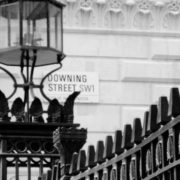
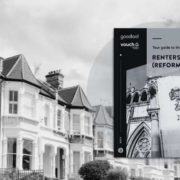

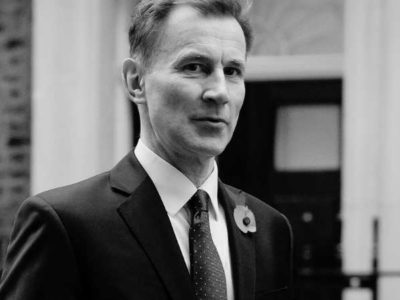
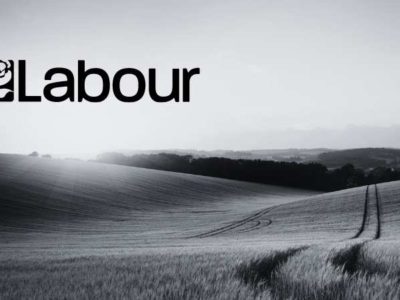
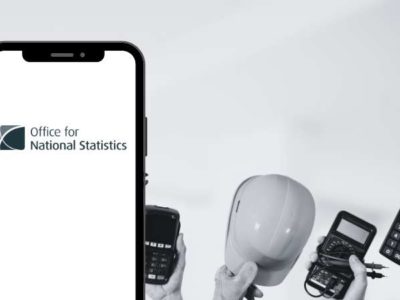
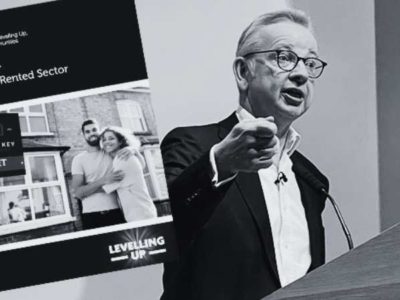


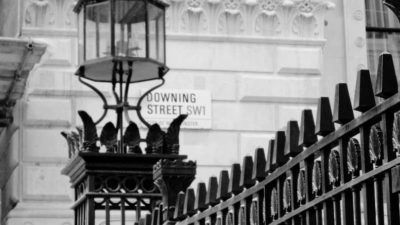
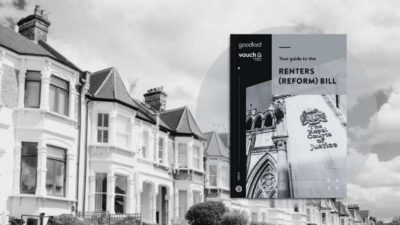






Comments